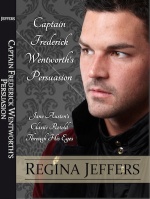by Barbara Monajem
Mr. Darcy is a great comfort to me. Let me explain:
It’s hard to believe, but lately I’ve been watching Pride and Prejudice (the one with Colin Firth as Darcy) for the first time. (It came out 20 years ago. How can I have just gotten to it now??) Needless to say, I’m enjoying it very much, and I’m awed by Firth’s portrayal of Darcy as a man of great natural reserve. Darcy is not really a sociable sort, although he can be with those he knows well. (It’s eons since I read Pride and Prejudice, but I assume this is pretty close to Darcy’s character in the book as well.)
There’s a scene in the third episode where Lizzie accuses Darcy of rudeness at an earlier ball where he only danced four times, thus depriving ladies of a partner. He excuses himself on the grounds that he doesn’t converse easily with strangers; she replies that she isn’t as proficient at playing piano as she might like to be, but that it’s her own fault for not practicing. In other words, he has no excuse for his behavior. (And one of the awesome things about Darcy is that her reprimand doesn’t upset him! In fact, it makes him love her even more! Can’t help but adore such an upright, thoroughly besotted man.)
Valid excuse or not, I can’t help but sympathize with Mr. Darcy. Like many writers, I’m an introvert. I completely relate to being uneasy with strangers. I was very nervous going to my first Sisters in Crime meeting years and years ago. I didn’t know anyone. I had never, ever introduced myself to strangers in such a situation. I’m the sort of person who never even asks for help or directions unless I have no choice. But because writing matters so much to me, I went to the meeting, and everyone was kind and welcoming. I was slightly less uneasy at my first romance writers’ conference and then my first Georgia Romance Writers meeting. Over the years I have learned to introduce myself to strangers and carry on conversations even though I’m sure I have nothing to say. I’ve even taken the astonishing step (for me) of co-presenting a workshop, something I had never, ever imagined doing. In other words, I practiced a lot.
But none of this social stuff has become easy for me, and I assume it never will be. In other words, practice does not make perfect. I’m a better writer because of practicing. (A better cook, too.) Less uneasy in social situations, yes. But have I become an extrovert? No, and I never will be. Nor, I suspect, will Darcy. He makes a point of being cordial to Lizzie’s aunt and uncle because her approval matters so much to him, but will he ever become an extrovert like his friend Bingley? Frankly, I can’t imagine it, and anyway, I prefer him as he is.
So I’ve decided to stop practicing. I’m competent enough in social situations. I don’t have to get any better. (I’m good enough at cooking, too.) But I can’t take this attitude toward writing. I must never stop practicing, even though I will never attain perfection. There will always be room—and hopefully the capacity—for improvement, and this is a great source of inspiration and comfort to me.
To Kiss a Rake (coming July 29)
WHEN A LADY IS ABDUCTED BY MISTAKE . . .
Melinda Starling doesn’t let ladylike behavior get in the way of true love. She’s secretly assisting in an elopement . . . until she’s tossed into the waiting coach and driven away by a notorious rake.
REVENGE REALLY DOESN’T PAY.
Miles Warren, Lord Garrison, comes from a family of libertines, and he’s the worst of them all—or so society believes. When Miles helps a friend to run away with an heiress, it’s an entertaining way to revenge himself on one of the gossips who slandered him.
Except that he drives off with the wrong woman . . . and as if that wasn’t scandalous enough, he can’t resist stealing a kiss.
Buy at: Amazon | Amazon UK | Amazon Canada | Amazon Australia
ABOUT THE AUTHOR
Winner of the Holt Medallion, Maggie, Daphne du Maurier, Reviewer’s Choice and Epic  awards, Barbara Monajem wrote her first story at eight years old about apple tree gnomes. She published a middle-grade fantasy when her children were young. When they grew up, she turned to writing for grownups, first the Bayou Gavotte paranormal mysteries and then Regency romances with intrepid heroines and long-suffering heroes (or vice versa). Some of her Regencies have magic in them and some don’t (except for the magic of love, which is in every story she writes).
awards, Barbara Monajem wrote her first story at eight years old about apple tree gnomes. She published a middle-grade fantasy when her children were young. When they grew up, she turned to writing for grownups, first the Bayou Gavotte paranormal mysteries and then Regency romances with intrepid heroines and long-suffering heroes (or vice versa). Some of her Regencies have magic in them and some don’t (except for the magic of love, which is in every story she writes).
Barbara loves to cook, especially soups, and is an avid reader. There are only two items on her bucket list: to make asparagus pudding and succeed at knitting socks. She’ll manage the first but doubts she’ll ever accomplish the second. This is not a bid for immortality but merely the dismal truth. She lives near Atlanta, Georgia with an ever-shifting population of relatives, friends, and feline strays.
You can find Barbara online at:
Website | Blog | Facebook | Twitter | Goodreads











































































